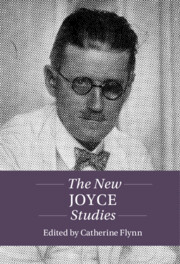Book contents
- The New Joyce Studies
- Twenty-First-Century Critical Revisions
- The New Joyce Studies
- Copyright page
- Contents
- Figures
- Notes on Contributors
- Acknowledgments
- Abbreviations
- Introduction
- Part I Scope
- Chapter 1 The Transcripts of (Post)Colonial Modernity in Ulysses and Accra
- Chapter 2 Joyce and Race in the Twenty-First Century
- Chapter 3 Dubliners and French Naturalism
- Chapter 4 Joyce and Latin American Literature Minor Transnationalism and Modernist Form
- Chapter 5 The Multiplications of Translation
- Chapter 6 The Joycean Public Domain and the Shape of Freedom
- Chapter 7 Ulysses in the World
- Part II Fragment and Frame
- Part III Perspective
- Bibliography
- Index
Chapter 3 - Dubliners and French Naturalism
from Part I - Scope
Published online by Cambridge University Press: 01 September 2022
- The New Joyce Studies
- Twenty-First-Century Critical Revisions
- The New Joyce Studies
- Copyright page
- Contents
- Figures
- Notes on Contributors
- Acknowledgments
- Abbreviations
- Introduction
- Part I Scope
- Chapter 1 The Transcripts of (Post)Colonial Modernity in Ulysses and Accra
- Chapter 2 Joyce and Race in the Twenty-First Century
- Chapter 3 Dubliners and French Naturalism
- Chapter 4 Joyce and Latin American Literature Minor Transnationalism and Modernist Form
- Chapter 5 The Multiplications of Translation
- Chapter 6 The Joycean Public Domain and the Shape of Freedom
- Chapter 7 Ulysses in the World
- Part II Fragment and Frame
- Part III Perspective
- Bibliography
- Index
Summary
Flynn’s chapter argues for the crucial role of nineteenth-century French naturalism in the conception and evolution of Joyce’s Dubliners. Specifically, it argues that Joyce’s ambition to correct the development of his country through representing the debilitation of its capital city is modelled on Émile Zola’s aim in his naturalist, twenty-novel series Le Rougon-Macquart (1871-1893) to present and diagnose the pathologies of the Third Republic through representing several generations of a diseased family. However, in their indirection, Joyce’s stories expand upon an ambiguity intrinsic to naturalism – the subjectivity inherent in any would-be objective perception of reality – an ambiguity developed to comic effect by the second-generation naturalist, Guy de Maupassant in the story “Auprès d’un Mort” (Beside Schopenhauer’s Corpse). The chapter argues that the first story of Dubliners, “The Sisters,” is inspired by this minutely observed, disenchanted, and enigmatic story. The chapter closes by looking at the final scene of “The Dead” to argue that Joyce turns the dead end of naturalism into a test for an Irish readership.
- Type
- Chapter
- Information
- The New Joyce Studies , pp. 50 - 63Publisher: Cambridge University PressPrint publication year: 2022



